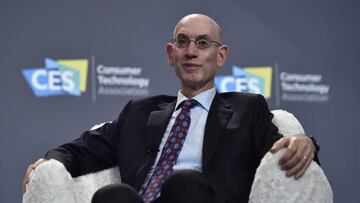NBA trade deadline: What are the rules about trading draft picks? How many can you trade?
If the NBA’s rules when it comes to player trading raise seem strange, that’s because they are. Nonetheless, we’re here to help you understand them.

Trading in the NBA is one of the most crucial ways that a team can build a championship roster, but the rules governing who can be traded and when are a confusing labyrinth to most people, even players.
How do trades work in the NBA?
The most straightforward idea of the trade is straight up player for player, or perhaps even player for cash. Those trades are readily understood. But when you get into draft picks and “future considerations” the water gets infinitely murkier. For most teams, trades can begin as soon as the regular season ends. For those in the playoffs, it is held off until they are eliminated.
But when a team trades for draft picks, there is a limit of seven years placed on the deal. It is a device instituted by the league to prevent a franchise from trading away their entire future for a single player or deal. This rule, officially known as the Stepian Rule, was instituted in response to one of the most controversial team owners in NBA history, Ted Stepian.
The Stepian Rule makes things tricky
Owner of the Cavs from 1980 to 1983, he created huge animosity by instituting racial quotas for his squad and running through coaches like water. But most pertinently, he traded away future first-round picks in consecutive seasons. The NBA finally stepped in and made the rule bearing his name, stating that teams cannot trade its first round pick in consecutive seasons. There are, of course, mechanisms by which the Stepian Rule can be circumvented, such as through pick protection clauses and pick swaps.
These would allow a team to trade away a pick in consecutive years, for example under the proviso that if it turned out to be in a certain part of the draft, say the top ten, then it would revert to the original team. A pick swap works in much the same way, but in reverse. It allows a team to retain the option of swapping picks with a trade partner, and can be exercised if that pick would be advantageous. As players’ value goes up, and the immediate return on immediate success for a team with it, then expect trade deals to get more complicated, not less.







